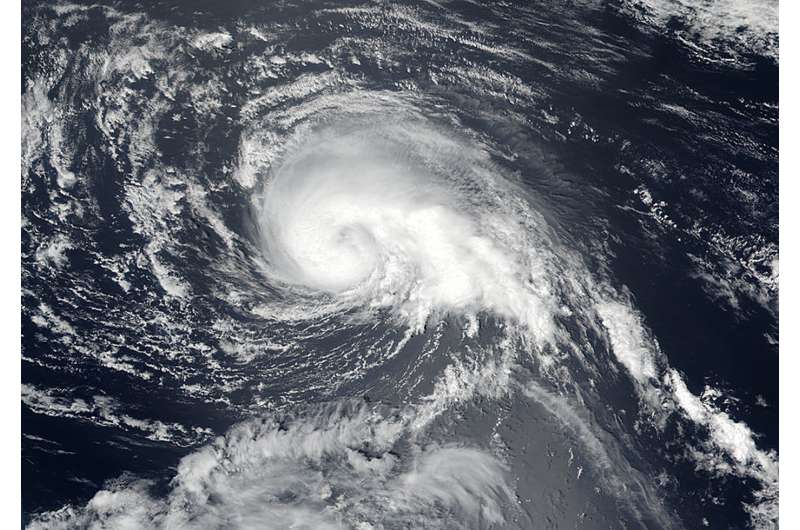On July 24 at 0342 UTC (July 23 at 11:42 p.m. EDT) NASA-NOAA's Suomi NPP satellite captured a visible image of Tropical Storm Kulap in the Northwestern Pacific Ocean. Credit: NASA/NOAA
NASA-NOAA's Suomi NPP satellite captured an image of Tropical Storm Kulap moving through the open waters of the Northwestern Pacific Ocean and the spiral of thunderstorms into the center made it appear like a clenched fist.
On July 24 at 0342 UTC (July 23 at 11:42 p.m. EDT), the Visible Infrared Imaging Radiometer Suite (VIIRS) instrument aboard NASA-NOAA's Suomi NPP satellite provided a visible-light image of Tropical Storm Kulap. The VIIRS image showed a thick band of powerful thunderstorms wrapping into the center from the north to northwestern quadrants, giving the storm the appearance of clenched fist.
At 11 a.m. EDT (1500 UTC) on July 24, The Joint Typhoon Warning Center said Kulap's maximum sustained winds were near 51.7 mph (45 knots/83.3 kph). It was centered near 33.1 degrees north latitude and 159.1 degrees east longitude. That's about 612 nautical miles northeast of the Minami Tori Shima Atoll. Kulap was moving to the west-northwest at 17.2 mph (15 knots/27.7 kph).
Tropical Storm Koru is northeast of Typhoon Noru. Noru is moving in a cyclonic loop and is forecast to turn back toward the west by July 26 and Kulap is forecast to continue on its west-northwestern track and stay north of Noru.
By Rob GutroNASA's Goddard Space Flight Center
Provided by NASA's Goddard Space Flight Center
























